Linda Ianniello and Susan Mears: Southeast Florida Blackwater Diving
Southeast Florida wasn’t the first location in the world to run blackwater dives. But the dive operators here initiated, and subsequently perfected the technique of black water drift dives, following a lighted buoy and dropline. They have been doing these dives regularly for over six years, and we have both been regular participants in these dives.
The dives are done offshore on the edge of the Gulf Stream, which runs from south to north off the coast. The boat goes out the inlet and travels about 5 miles south, based on the strength of the current, then travels 3 to 5 miles east to where the water is 500 to 700 feet deep. The divers then jump in (untethered) and drift north with the current, hopefully ending up right outside the inlet. The dives last 90 minutes, and we have traveled from one to nine miles during the dive. But since everything is drifting at the same speed, we don’t feel it.
The boat deploys a large buoy attached to a 45-foot dropline with a weight at the bottom. There are lights at the top (to light up the buoy) and the bottom. Marker lights are placed at intervals along the line. The buoy provides a reference for the boat to follow. It is the divers’ responsibility to stay within sight of the line and surface near the buoy at the end of the dive. Divers usually go no deeper than 45 feet (14 meters) as the current varies with depth.
There is a wide diversity of small subjects to be seen on these dives, such as fish and mollusk larvae; a variety of shrimps and crabs; gelatinous zooplankton (jellyfish, salps, and siphonophores); and pteropods, heteropods, and gymnosomes that spend their entire life cycle in the water column. And when the ocean is calm enough, it is fun (and challenging) to try for reflection shots of flying fish at the surface.
We invite you to come to southeast Florida (Palm Beach County) and experience these dives first hand! The two operators regularly running the dives are Pura Vida Divers and Walker’s Dive Charters. It is better to come during the summer months when the ocean is calmer, and dives are less likely to be canceled due to rough seas.
See more of our work on our web sites: Linda and Susan
We can also be found on Facebook: Linda and Susan
And Instagram for Susan
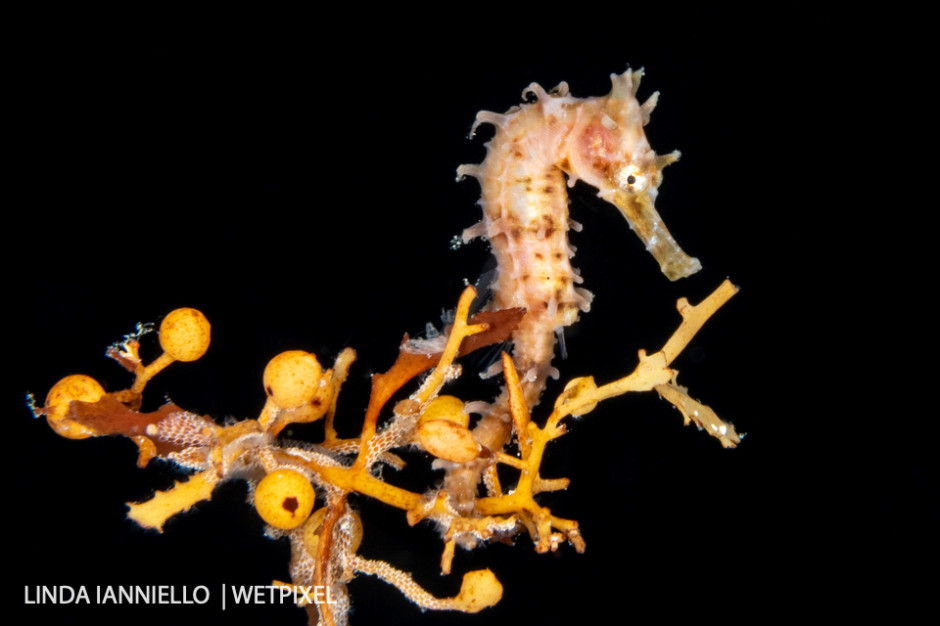
Juvenile seahorses are frequently seen, free-swimming or hanging onto a piece of Sargassum.
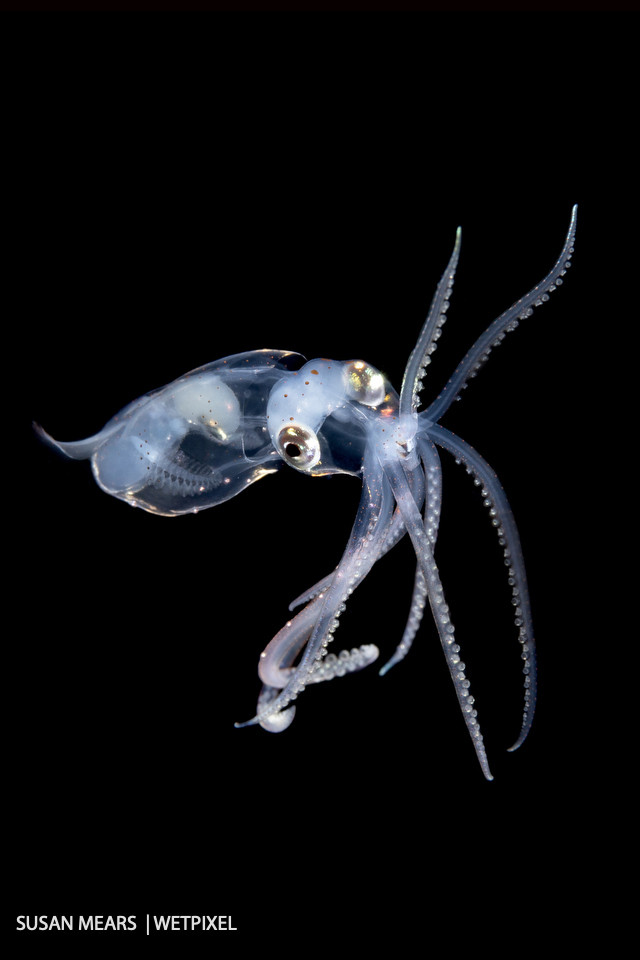
Sharpear enope squid paralarva, (Ancistrocheirus lesueurii).
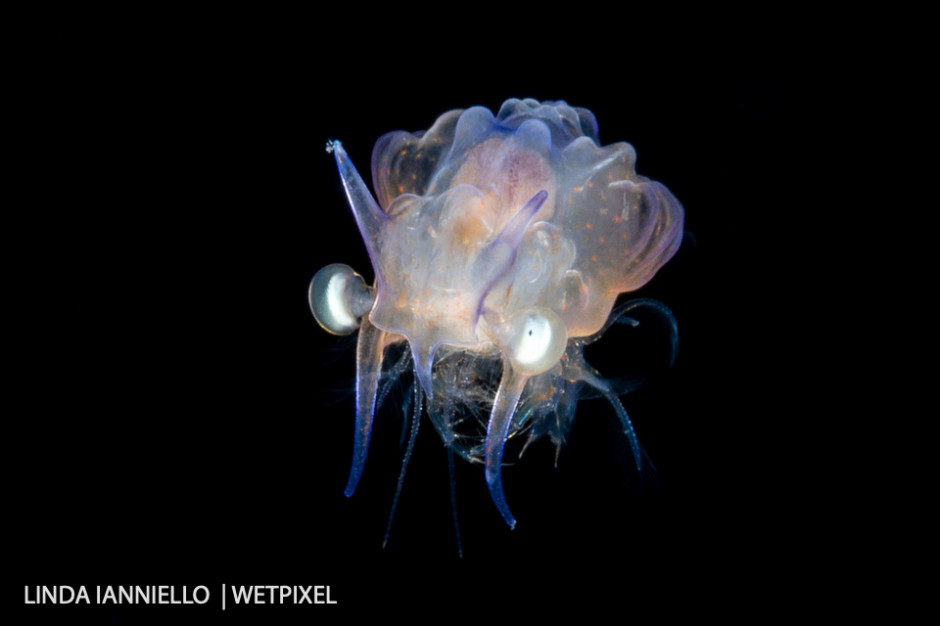
This looks like a crab, but it is really the larva of a deep-water shrimp, Cerataspis sp.
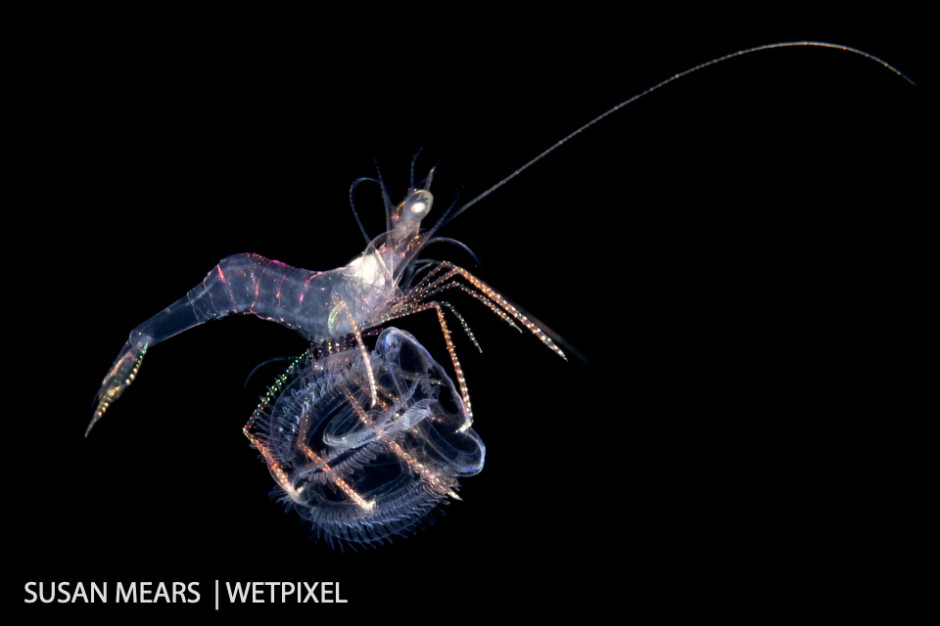
Colorful shrimp carrying an acorn worm larva.
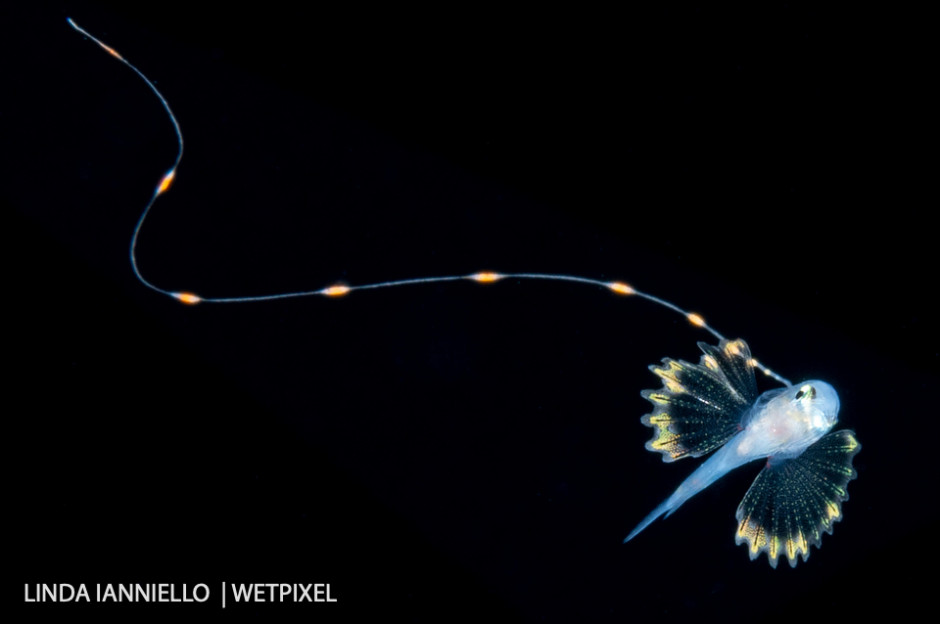
A soapfish larva, Rypticus sp., with its signature long filament.
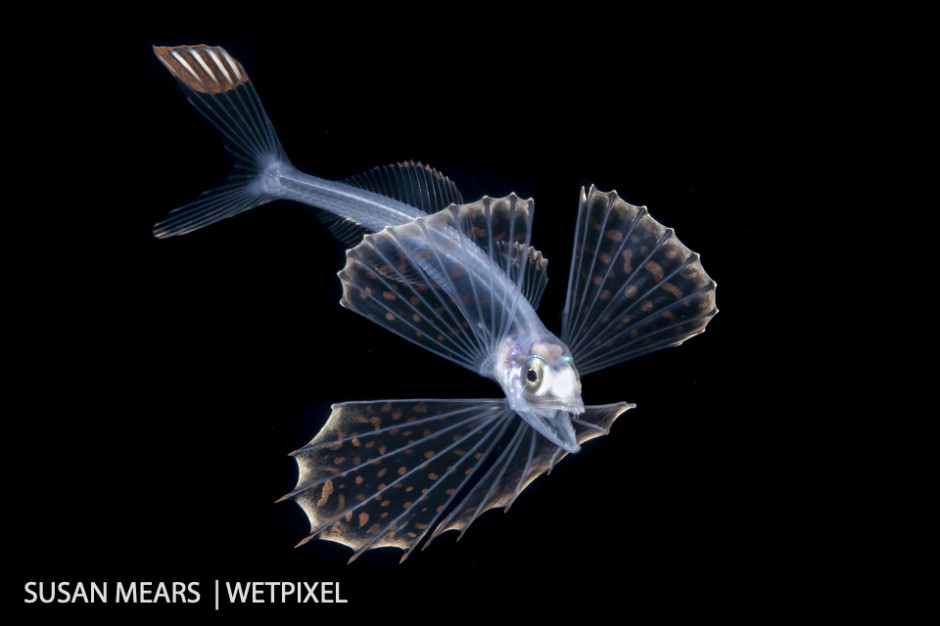
Snaketooth swallower (Chiasmodontidae - Kali sp.) A deep sea fish with the ability to swallow prey much larger than itself.
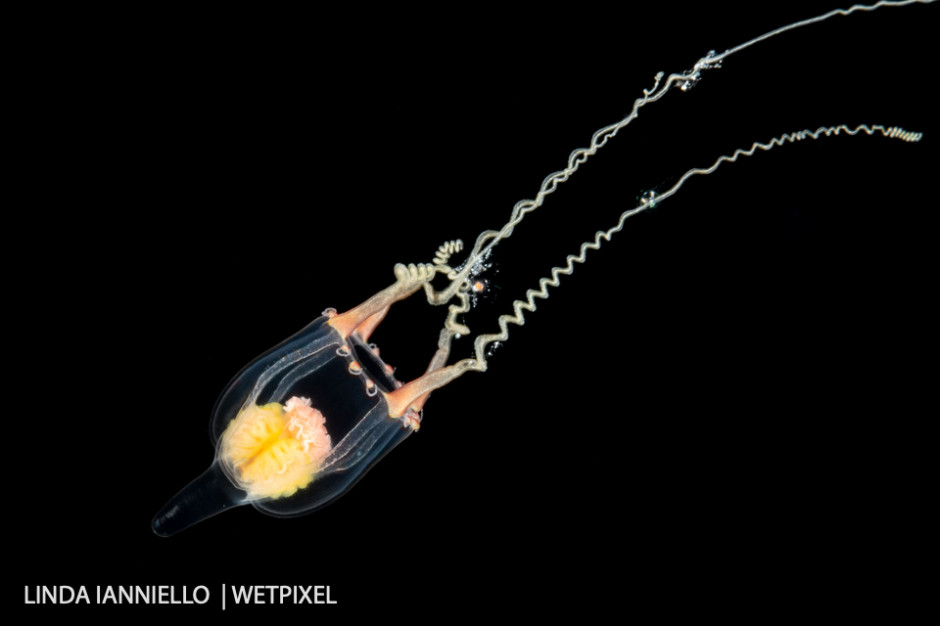
A colorful and delicate Hydromedusa, Pandeidae family.
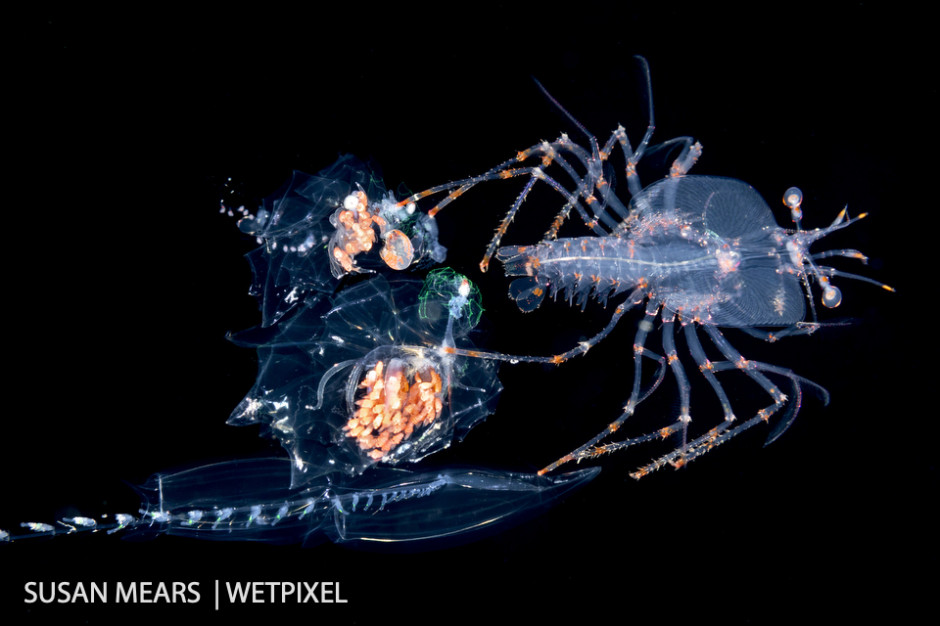
Spiny lobster carrying 4 siphonophores which is uses for food and transportation.
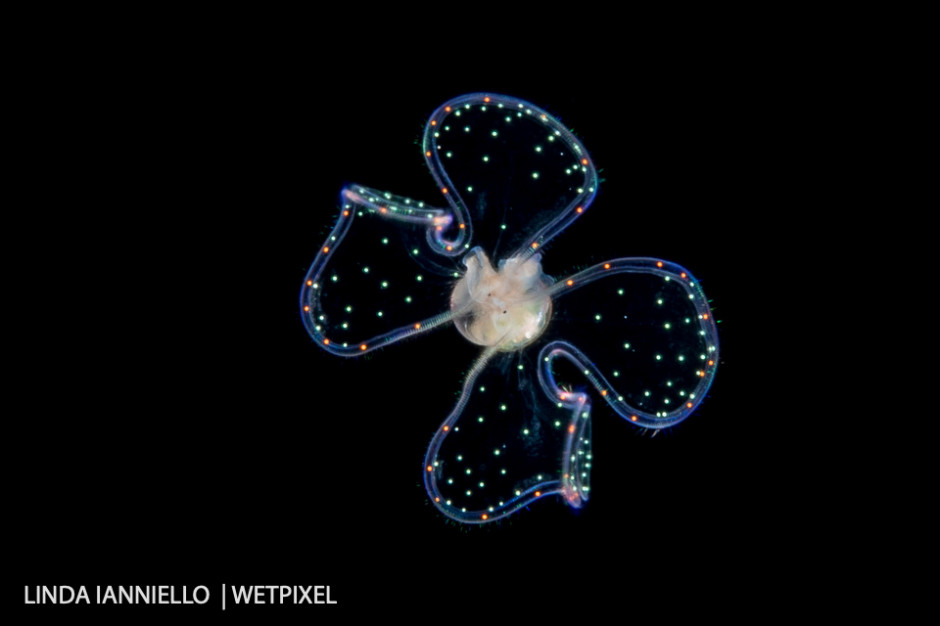
A tiny veliger larva of a marine gastropod that we have nicknamed "sparkles."
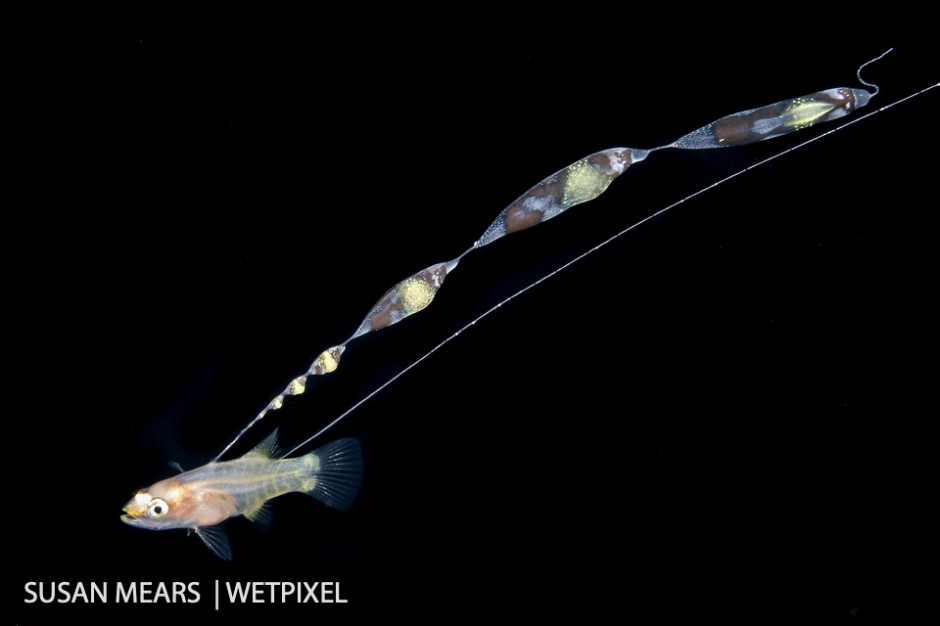
Reef baslet larva. The long and ornate dorsal filament is thought to mimic the stinging tentacle of a siphonophore.
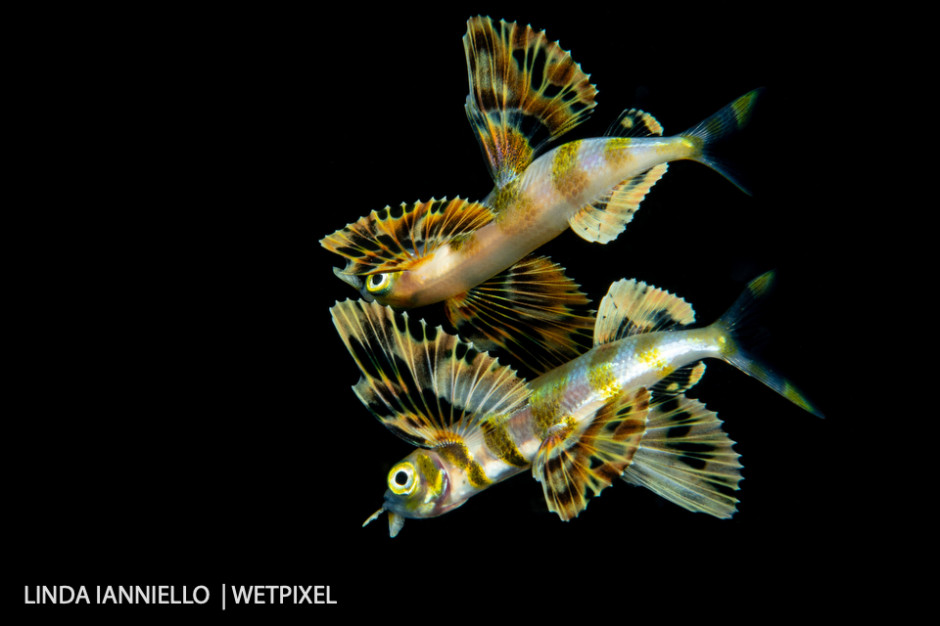
A flying fish, Exoceotidae family, shot on a very calm night at the surface producing a detailed reflection.
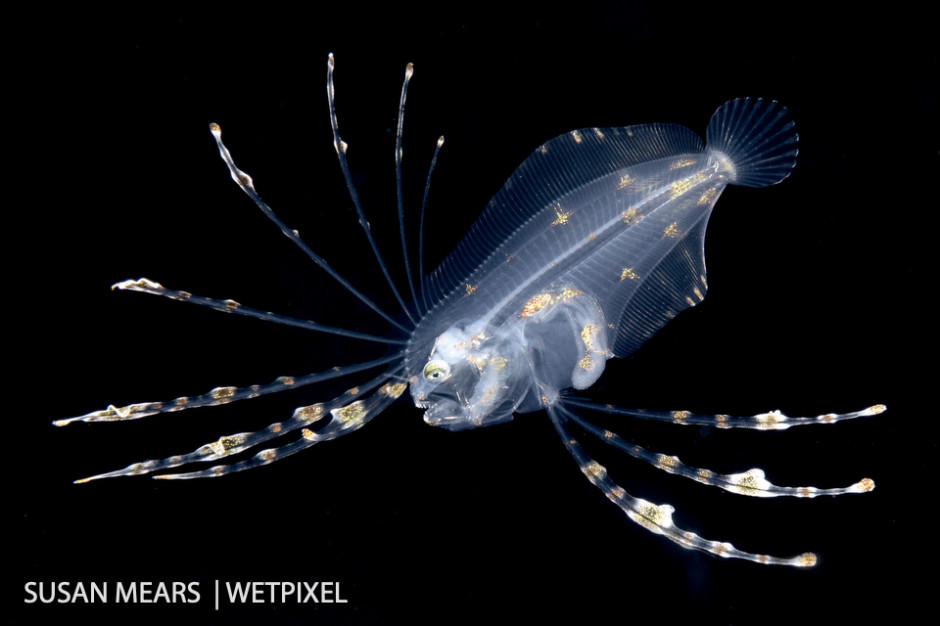
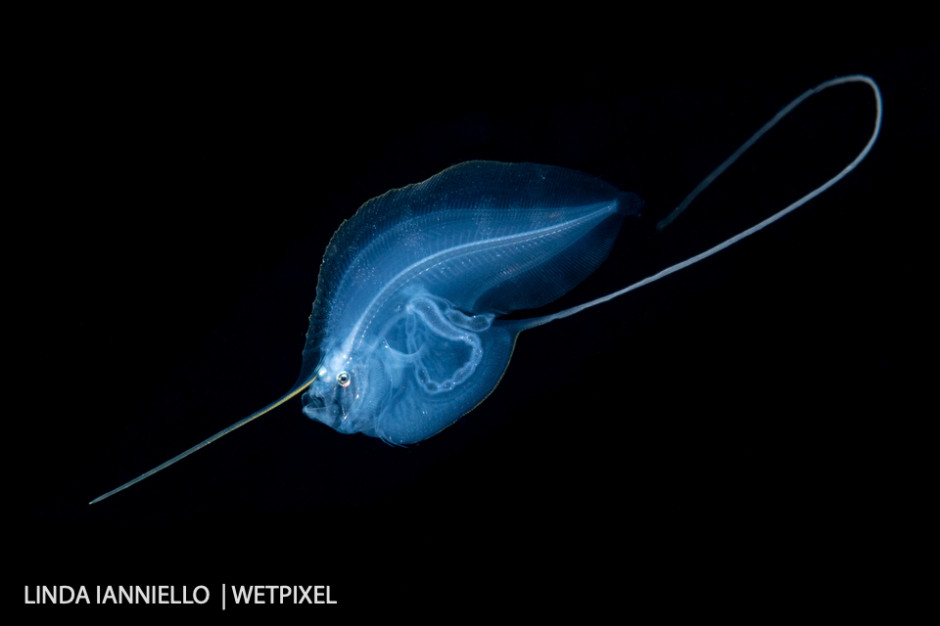
One of the varieties of cusk eel larvae, a deep water Ophidiidae, Pycnocraspedum phyllosoma.
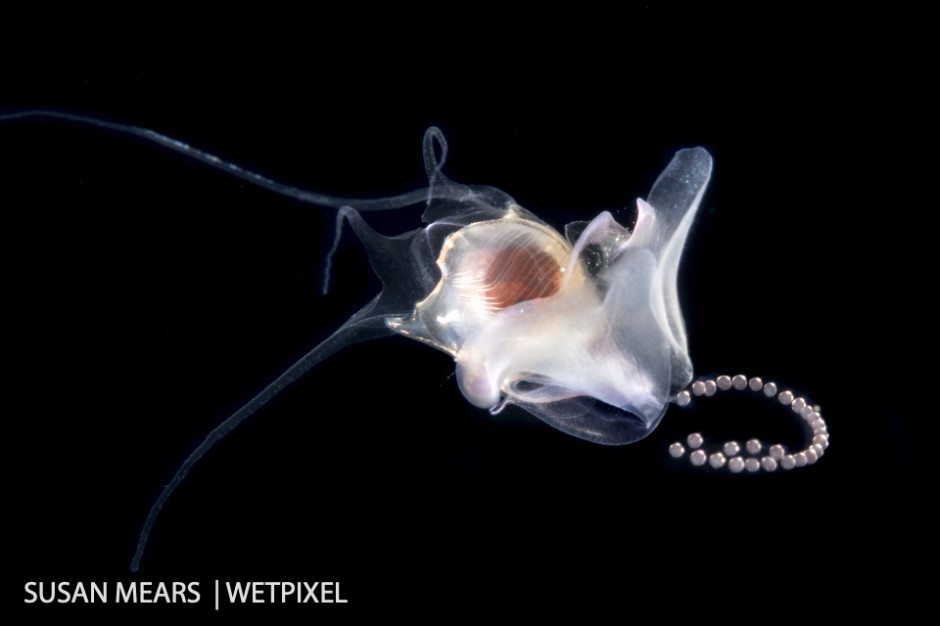
Sea butterfly, a pelagic swimming sea snail, releasing a string of eggs.
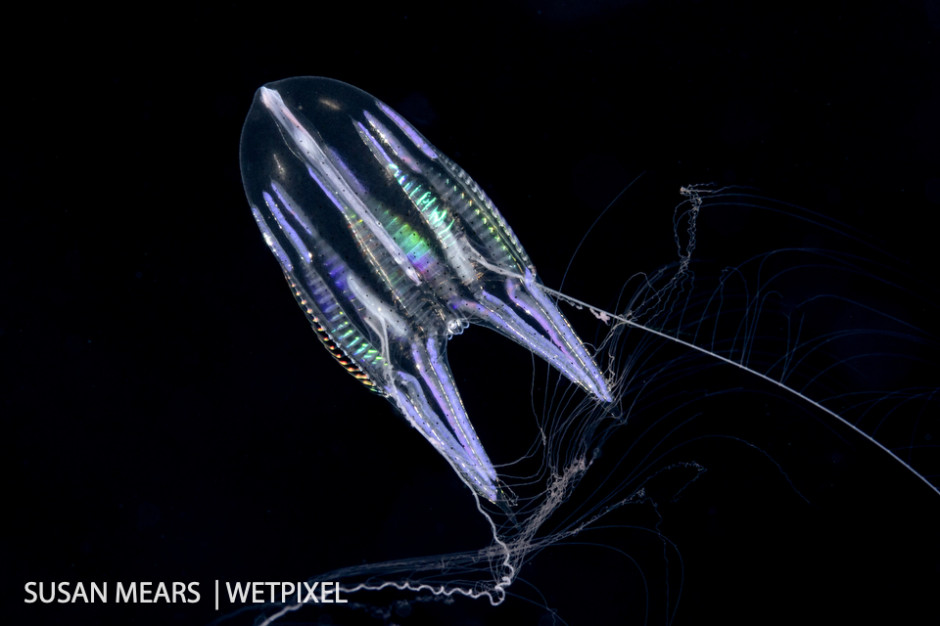
Ctenophore (Callianira bialata).
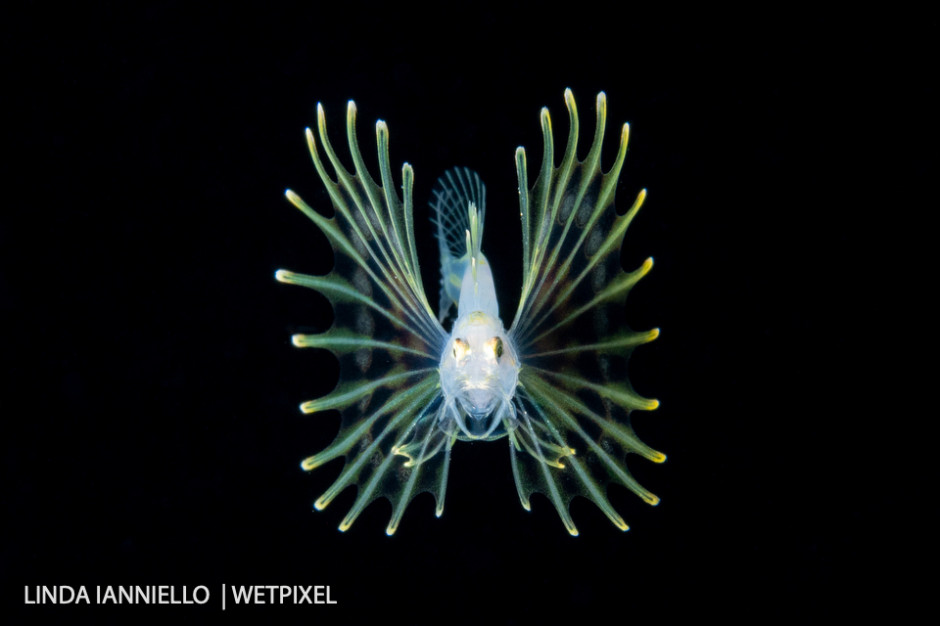
A stunning lionfish larva, Pterois sp., that unfortunately doesn't belong in our waters.
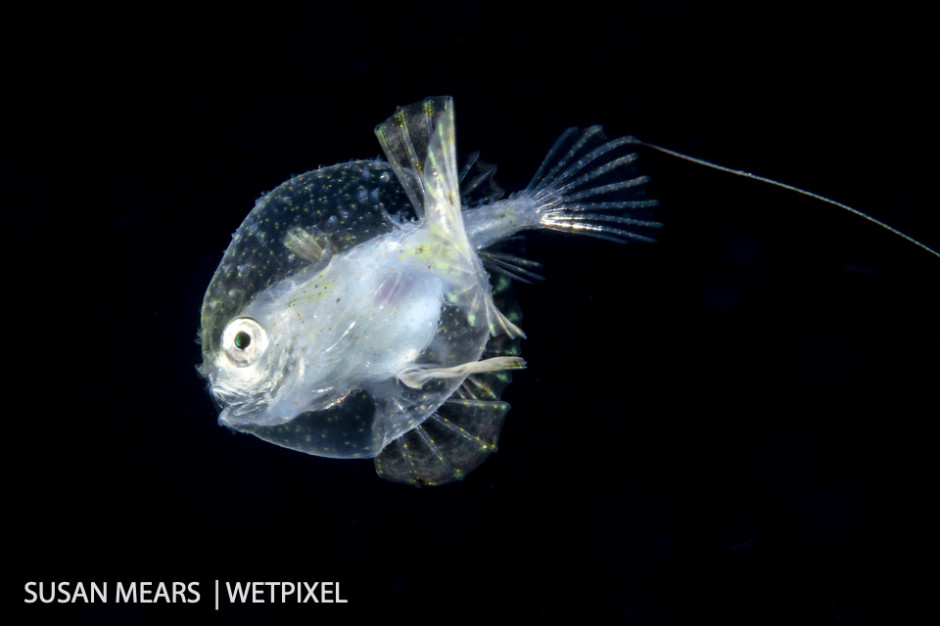
Pancake batfish larva, (Haieutichthys aculeatus).
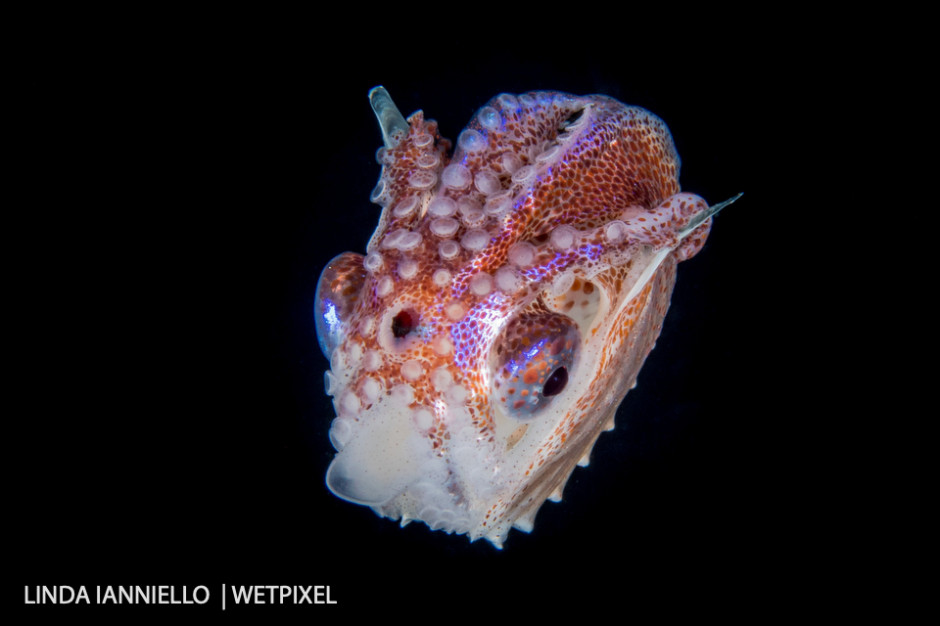
We have them too! A female Paper Nautilus, Argonaut pelagic octopus.
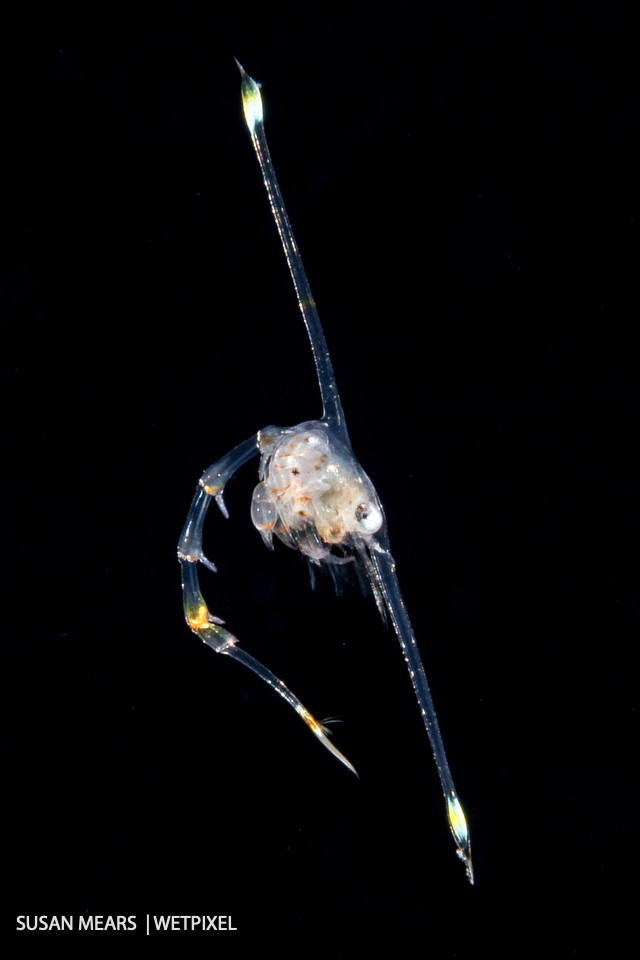
Crab zoea, the first larval stage of a crab.
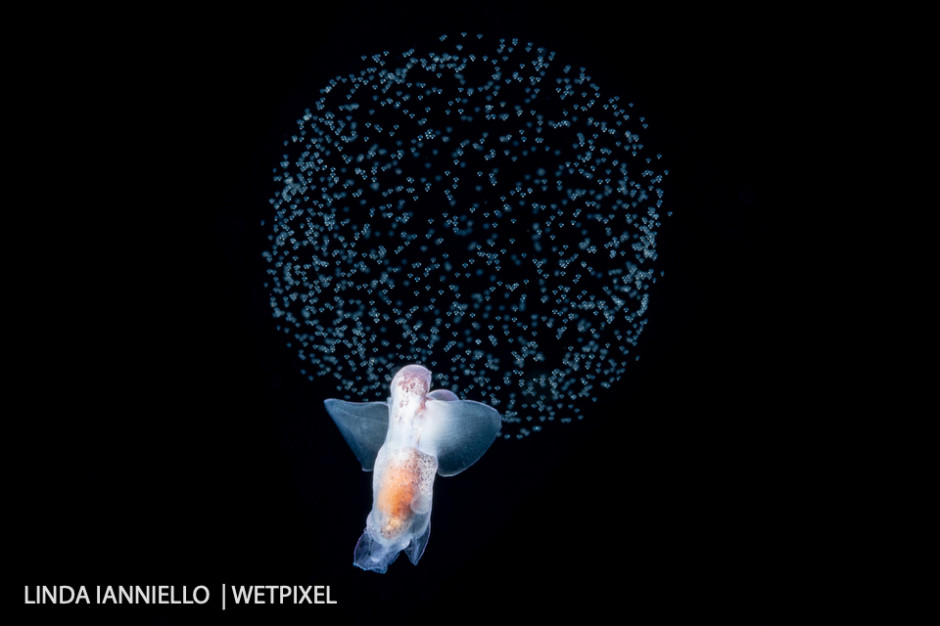
The only time this sea angel (gymnosome) sits still is when it is spawning.